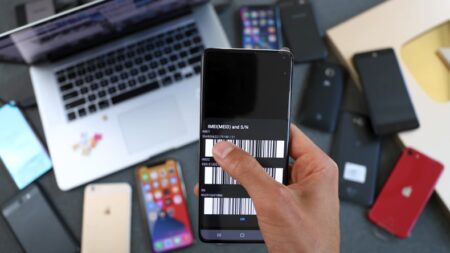With the launch of the new iPhone 14 lineup, Apple has finally transitioned to eSIMs as the new models will ship without physical SIM trays — but only in the US.
Apple has always advocated the use of eSIM technology. The iPhone lineup has supported the technology for many years now. Apple started providing the technology with iPhone XS and since then has added the support to every new iPhone.
All the previous iPhone models offered a nano SIM card as well. So the buyer always had a choice to either use a physical SIM or an eSIM. Cellular-enabled iPads and Apple Watches also use eSIM technology.
Last year’s iPhone 13 provided the luxury of having multiple eSIMs on one phone.
About eSIM on iPhone 14
eSIM means an embedded SIM card. It is an electronically programmable SIM card embedded directly into a device. It is fixed onto the phone’s motherboard; you can’t insert or remove it.
The eSIM is a lot smaller than the physical SIM card. It is a rewritable SIM that can use a cellular plan of a network carrier without requiring a physical SIM card.
There’s no need to get the SIM card activated. Instead, you need to log in with your carrier information, and the carrier will remotely provision your iPhone to connect it to their network.
Apple has confirmed that every iPhone 14 model can store eight or more different eSIMs, with two usable at one time. The tech giant also informed that major carriers, including T-Mobile, Verizon, and AT&T, will assist customers with eSIM-related queries, upgrades, and changes.

Requirements to use an eSIM
- An iPhone XS, XS Max, XR, or later (iOS 12.1 or higher)
- A wireless carrier supporting eSIM
- Your device needs to be connected to a Wi-Fi network
You can also convert the physical SIM inside your current iPhone to an eSIM. This will be helpful in transferring the eSIM to your new iPhone 14 when it arrives.
Benefits of an eSIM
One of the significant benefits of an eSIM is that it isn’t easy to hack as all its details are stored on the cloud. Hackers would need to break past enterprise-grade security to get to your phone.
Since it is impossible to eject the SIM card out of the device physically, eSIMs can be easily tracked by the operators in case of theft. There is also no chance of losing or damaging the SIM card on your own as it is safe inside the phone.
eSIM allows you to choose your desired network, data, or service plan through websites. You can do this at home by yourselves with an active internet connection.
The omission of the SIM tray might provide extra space for other components, perhaps a larger battery. It also enables manufacturers to redesign the internal layout of the device.
Since there’s no necessity for eSIM to be near the edge of the phone, it could help make waterproofing even better.
Downsides of an eSIM
Although the technology has been around for a while, not all smartphones support eSIM. Major smartphone companies have been reluctant to use the technology owing to different market conditions. If one of your devices supports eSIM while the other doesn’t, you might get stuck.
Suppose you want to use your SIM on a tablet or a different device. In that case, you can’t do it immediately as eSIMs are embedded inside your phone.
The idea of eSIMs being easy to track might sound good for finding your lost phone, but some might not like the idea.
Travelers might find using eSIM considerably less convenient while traveling to another country. US citizens traveling to a country where the technology is not as widespread can face problems.
How to set up an eSIM?
The iPhone provides specific instructions to set up your eSIM when you turn on the phone. You can watch the video below to get a clear idea of how to set up an eSIM on your respective iPhone model.
It will be interesting to see how the change to eSIM would affect the iPhone’s durability. Apple believes it is the right time to present the technology — at least in the United States.
Apple decided to remove the headphone jack in the iPhone 7 and has never looked back. It helped improve the water resistance and the iPhone X’s design just a year later. Only time will tell if iPhone users will find this change satisfactory.













